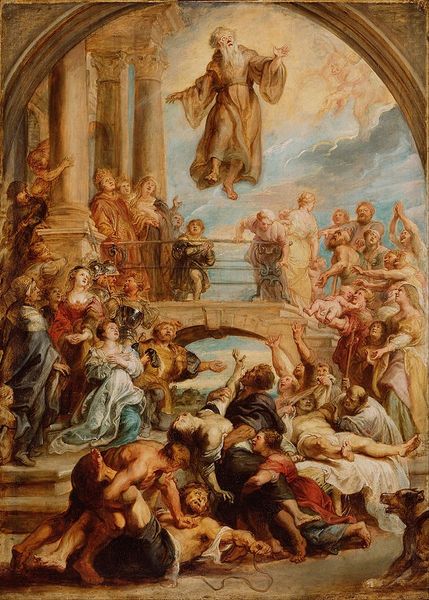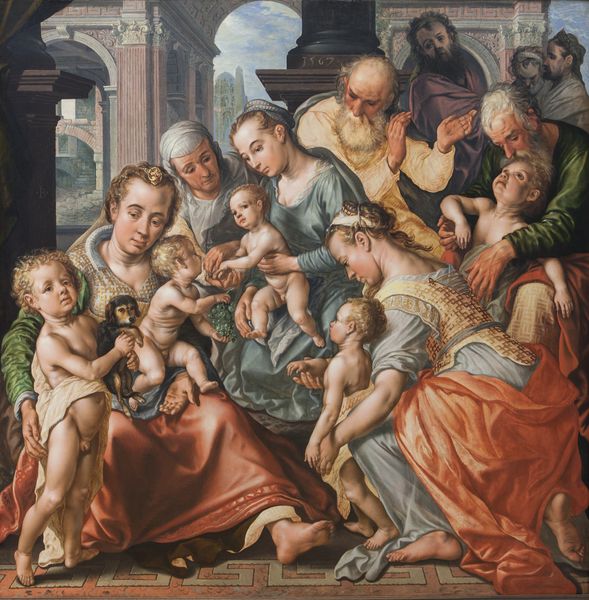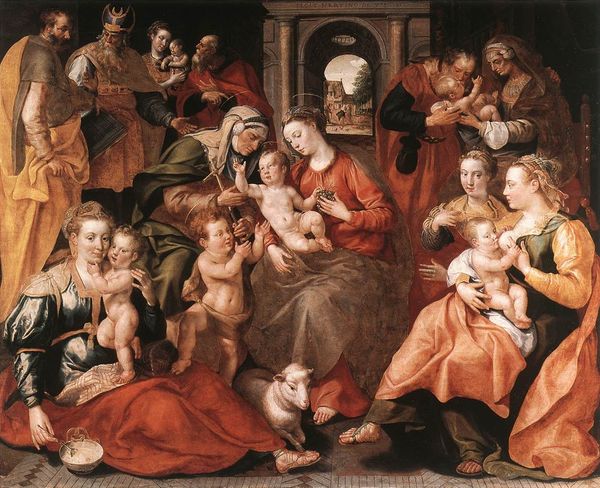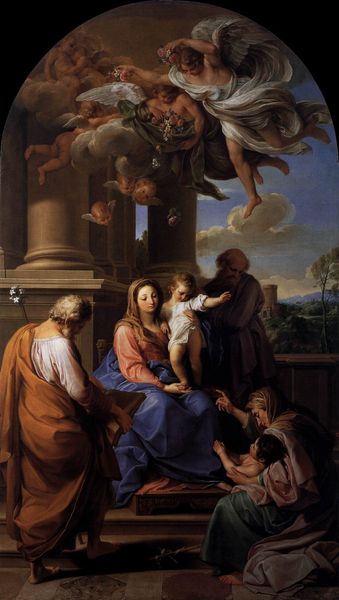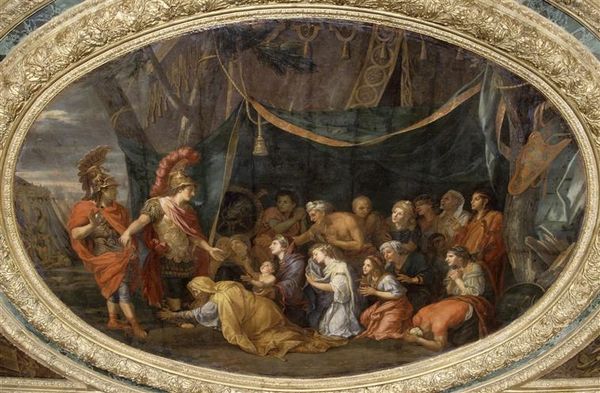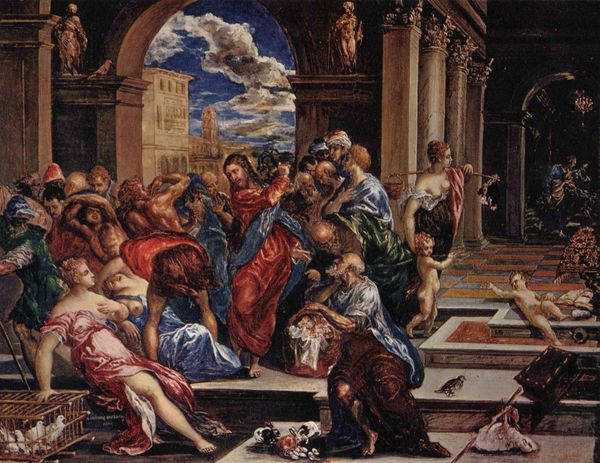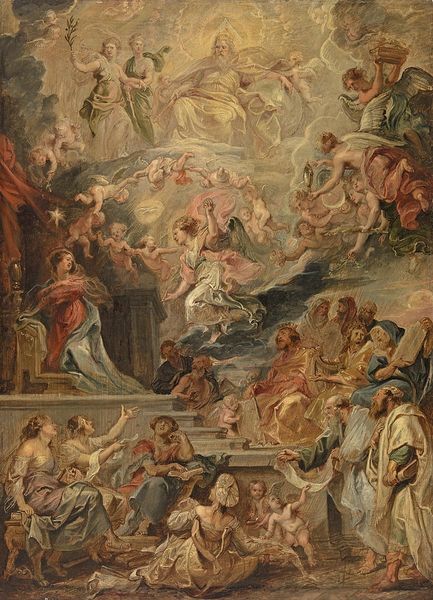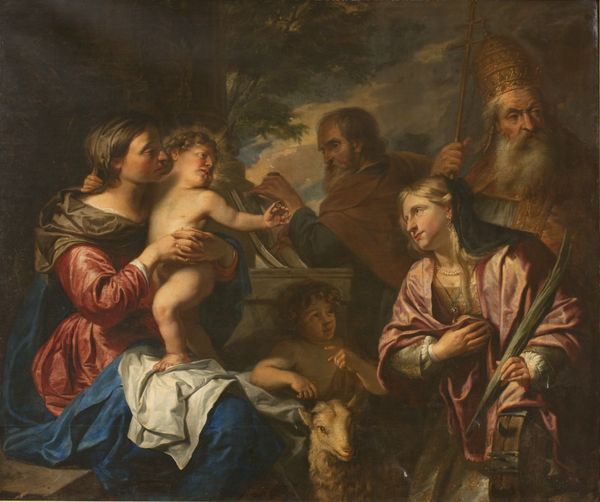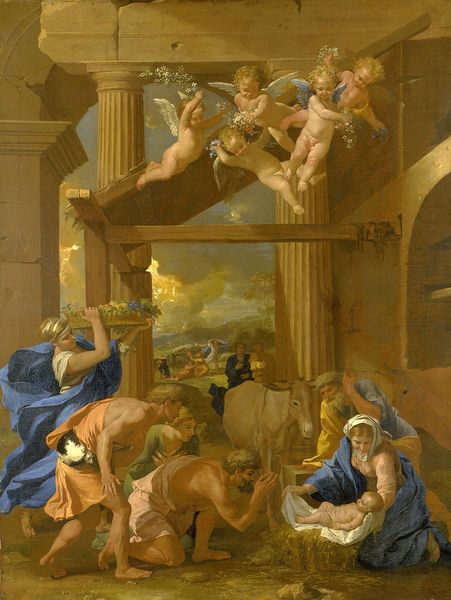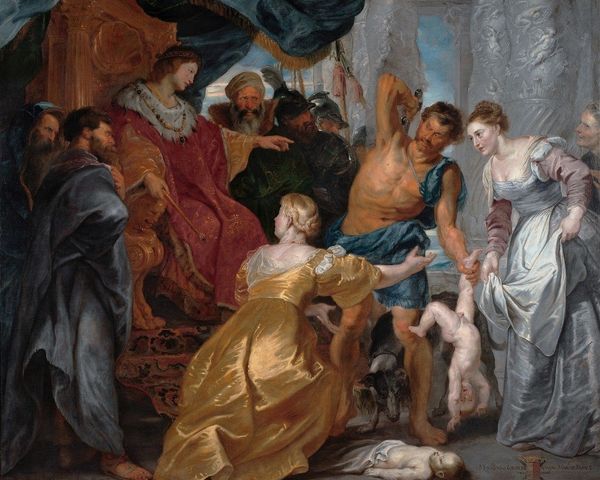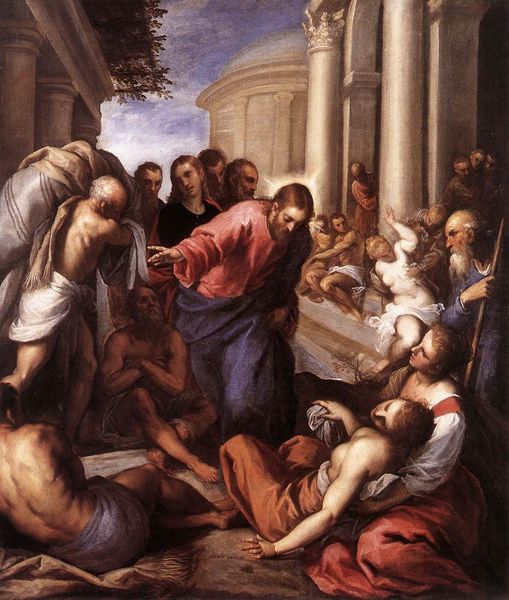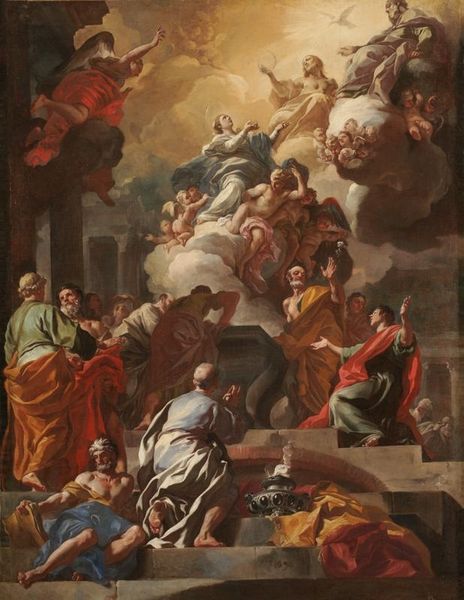
painting, oil-paint
#
narrative-art
#
baroque
#
painting
#
oil-paint
#
figuration
#
oil painting
#
history-painting
Copyright: Public Domain: Artvee
Curator: This is Jacob Jordaens’s oil on canvas, “Christ blessing little Children. Suffer Little Children to Come unto me," dating back to the 1660s. What springs to mind when you see this artwork? Editor: It’s a flurry of chubby cherubs! Like a baroque baby convention unfolding at the feet of, presumably, the aforementioned Christ. I'm getting a sense of chaotic joy, all those limbs and curious faces. And is that… a dog peeking out? Curator: Indeed. Observe how Jordaens orchestrates this sense of vivacity. The composition, a complex interplay of diagonal lines and pyramidal groupings, draws the eye upward towards the figure of Christ. He uses tenebrism effectively; note the dramatic contrast between light and shadow enhancing the emotional intensity and emphasizing key figures within the scene. Editor: Absolutely! And the colors, they're so rich and warm, pulling you right into the heart of the scene. The texture of the fabric—the rough spun wool of Christ's robe against the smoothness of a child’s skin—it’s palpable. Feels like a sun-drenched afternoon in a slightly cramped Renaissance daycare. Curator: Jordaens, a leading figure of the Flemish Baroque, uses this history painting to not only depict a biblical narrative, but also engage with broader humanist concerns. He translates the theological concept of divine grace into a highly accessible, almost domestic setting. His painting underscores a message about the accessibility of grace to all. Editor: Right! He grounds the divine in the everyday, normalizes it. He lets the toddlers wreak havoc on what could’ve been another stiff, unapproachable religious scene. A scene filled with children, with babies… it’s like he’s winking at us, reminding us of the human element, even—or especially—in matters of faith. And hey, dogs *are* welcome, too! Curator: Indeed. Considering the historical and political context, it's important to reflect on the Counter-Reformation influences in Jordaens’ work, especially on the promotion of traditional religious values, here subtly couched with the themes of innocence and purity represented by children. Editor: Well, looking at it now, knowing that context, it just seems a bit less… chaotic good, and a bit more strategically sweet. Still a fantastic bit of artistic storytelling, either way! It's made me rethink first impressions. Curator: Indeed, the confluence of careful arrangement, raw humanity, and historical intention makes this a deeply interesting canvas.
Comments
No comments
Be the first to comment and join the conversation on the ultimate creative platform.
